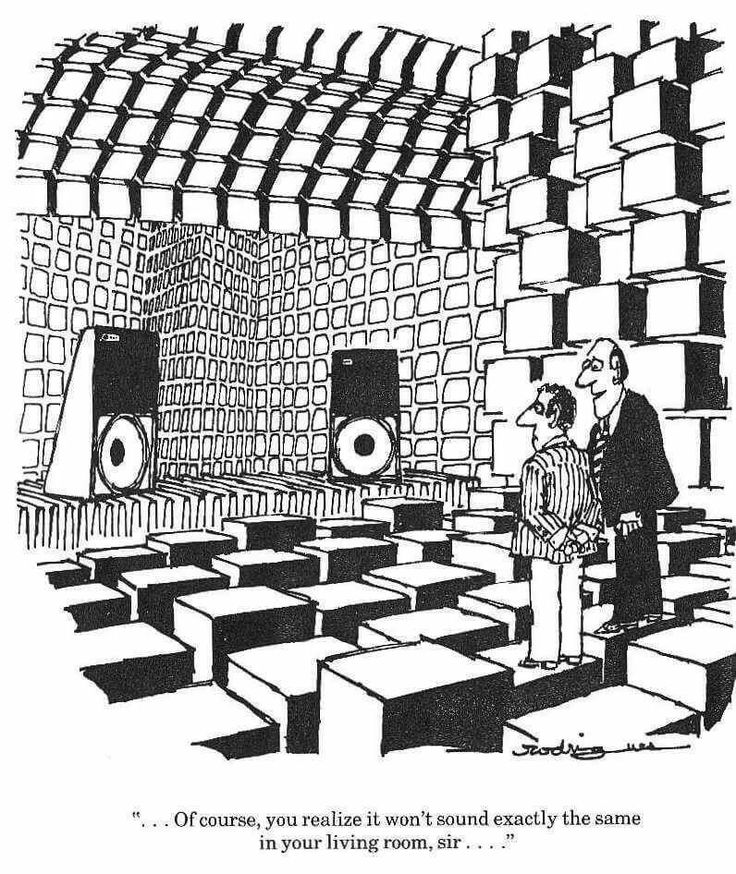The first thing to note is that speaker efficiency is more properly termed sensitivity – a far more revealing term, suggestive as it is of the speaker’s sensitivity to input. This is a key consideration. Far from being the ‘one number tells all’, silver bullet solution to great sound, speaker sensitivity is just one part of a complex, three-way equation. In terms of understanding or planning an audio system, it is almost impossible and certainly unwise to separate consideration of the speaker from its driving amplifier. Whilst it’s attractive to suppose that the amplifier yells “Jump” and the speaker responds with “How high?”, in electrical and operational terms, that isn’t the case. Back EMF and impedance variation means that the speaker’s response to input can vary significantly with frequency and the capability of the amplifier to meet its complex demands.
So, as far as the speaker is concerned, sensitivity is only half of the story (at best): the drive characteristics are just as, if not more important, especially when it comes to amplifier matching. The idea that sensitivity alone indicates how easy a speaker is to drive is not only wrong, it is potentially misleading when it comes to choosing an amplifier or assessing a speaker’s suitability for an existing system. A good case in point is the Wilson XVX, described by some sections of the press as a “high-efficiency design”. The quoted sensitivity is 92dB, which is certainly above average. But look at the nominal impedance and you’ll see that it’s 4Ω, with an undeniably awkward 1.6Ω minimum. Even if the phase angle is benign, that’s going to suck the power supply of any modest amplifier dry, leaving it gasping for musical breath. Which is probably why you generally see the XVX being demoed with large amplifiers, often the monster D’Agostinos. It’s a perfect example of the difference between system reality and product presentation/perception.
 This situation is aggravated by the absence of standardised or corroborated sensitivity measurements. The audio industry isn’t alone in this. When it comes to bicycles, frame weight is a big selling point, yet often the quoted frame weight from a manufacturer is for a raw frame, without decals, paint or essential cable stops or fittings. Actively misleading or creative accounting? In the same way, although there is a generally accepted standard for measuring speaker sensitivity (level measured at 1m distance for a 1Watt input at 1kHz), this is neither particularly useful nor actively enforced. Most speaker manufacturers quote a simple figure in dB, without specifying frequency or bandwidth. They might measure at 1kHz – or they might choose to measure at some other frequency – perhaps a frequency with an isolated output spike or bump. They might engineer/allow a 1dB rise in output at 1kHz or they might just make it up as they go along. After all, what’s a dB here or there between friends and customers? Goosing the efficiency figure for a new speaker is so common it’s almost accepted practice, whether that’s a case of rounding up the actual figure, taking a best-case scenario in terms of measurement frequency and presentation, or simply adding to the measured number.
This situation is aggravated by the absence of standardised or corroborated sensitivity measurements. The audio industry isn’t alone in this. When it comes to bicycles, frame weight is a big selling point, yet often the quoted frame weight from a manufacturer is for a raw frame, without decals, paint or essential cable stops or fittings. Actively misleading or creative accounting? In the same way, although there is a generally accepted standard for measuring speaker sensitivity (level measured at 1m distance for a 1Watt input at 1kHz), this is neither particularly useful nor actively enforced. Most speaker manufacturers quote a simple figure in dB, without specifying frequency or bandwidth. They might measure at 1kHz – or they might choose to measure at some other frequency – perhaps a frequency with an isolated output spike or bump. They might engineer/allow a 1dB rise in output at 1kHz or they might just make it up as they go along. After all, what’s a dB here or there between friends and customers? Goosing the efficiency figure for a new speaker is so common it’s almost accepted practice, whether that’s a case of rounding up the actual figure, taking a best-case scenario in terms of measurement frequency and presentation, or simply adding to the measured number.

